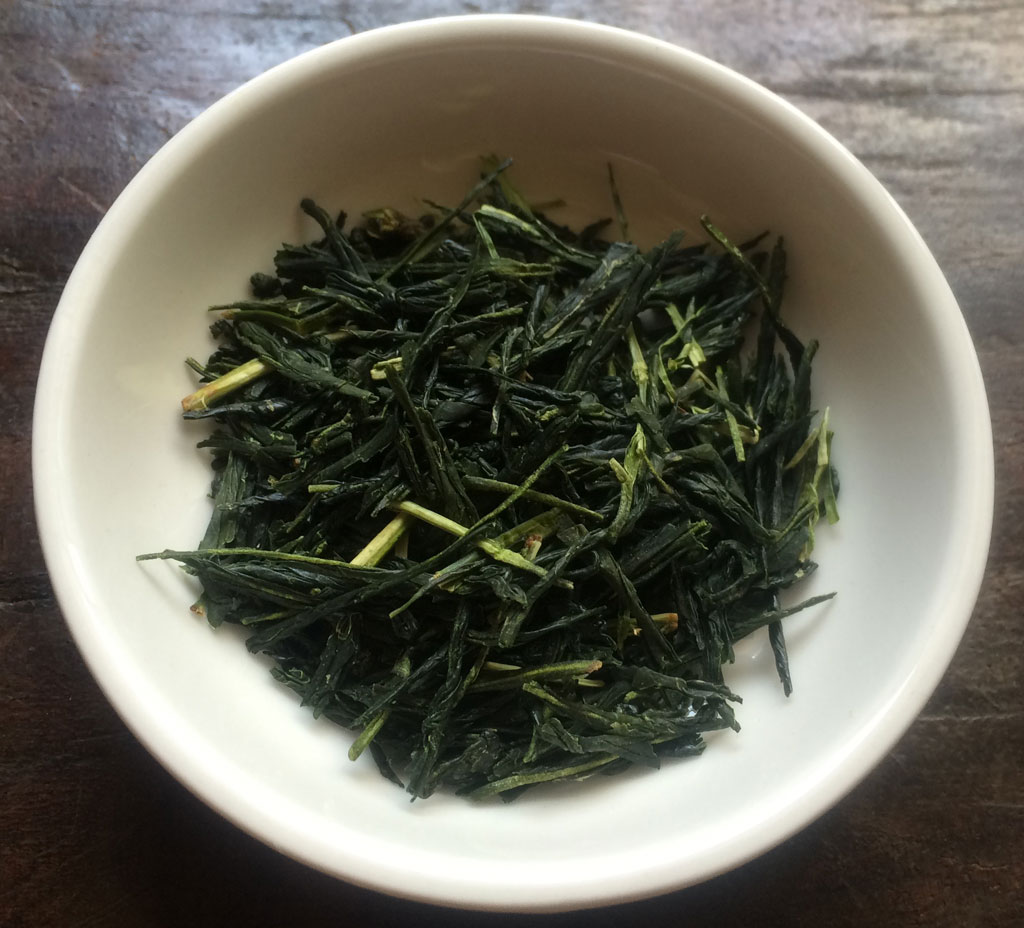July 2016 – Shincha from Nara
Following the Shincha from Kumamoto (熊本), we selected another Shincha (新茶) from Tsukigase (月ヶ瀬), in the prefecture of Nara (奈良).

Shincha, Kabusecha
In the ancient times, we considered tea to be a medicine. People drank the leaves in summer, the fruits in autumn, the roots in winter and the burgeons in spring. Drinking the burgeons of tea of tea in the time of Shincha is said to be good for spending one year in good health. Now we advise all around the world to eat seasonal produce at the time of harvest, rather than off season. It's both very natural and rational.
The type of this Shincha is Kabusecha (冠茶). We proposed you a Kabusecha (かぶせ茶) from Kyoto (京都), back in February 2015. The spelling of this Kabusecha is “the tea (お茶) of crown (冠)” in kanji (Chinese characters), contrary to the Kabusecha (かぶせ茶) from Kyoto which simply mean “to cover (かぶせる)”. Tuskigase’s Kabusecha expressed in “the crown” is much more romantic, isn’t it?
The tea is covered with a shade more than 10 days before the harvest. This process increase the amount of amino acid, but reduces the amount of catechin. It results in a strong umami flavor and a color specific to Kabusecha, which is categorized halfway between Gyokuro (玉露) and Sencha (煎茶). The tea has a clear sweetness and a pure taste.
Tsukigase, in the prefecture of Nara
Tsukigase is a region of the prefecture of Nara, located between Kyoto and Nara city. Tsukigase produces tea of high quality. Tea plantation started here 300 years ago. The growth of tea is slow in this area, however, the tea keeps a rich nutrition inside, taking time.
Tsukigase has a famous site for the plum trees, named “Tsukigase Bairin (月ヶ瀬梅林)”. The festival of plum trees is held in every February and many people come to appreciate them.
The producer is Tukigase Kenkou Chaen. They adopted the organic method back in 1984. They do not use any fertilizer and respect the harmony with nature.

Brewing Shincha, Kabusecha
The amount of tealeaves should be adapted according to the desired taste: it should be around 2 tea spoons (6 grams) of Shincha for 180ml (6.0oz) of spring water. The first infusion should last between 1.5 and 2 minutes in water at 60-70ºC (140-160ºF). The second infusion should be done for 60 seconds at 80ºC (176ºF), and the third one faster at an even higher temperature.
If you have questions about Japanese green teas, please don’t hesitate to contact us!
